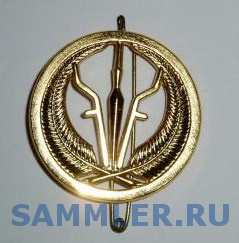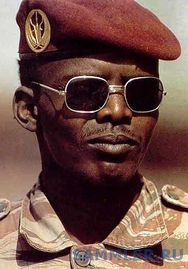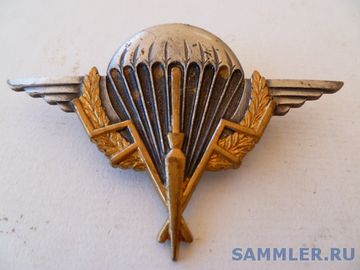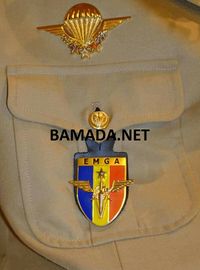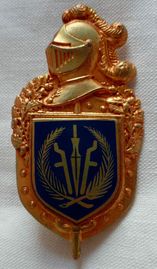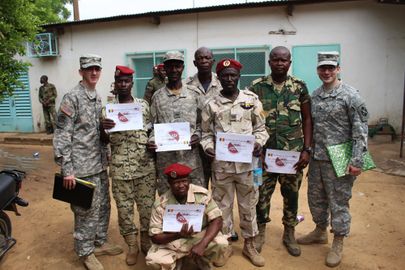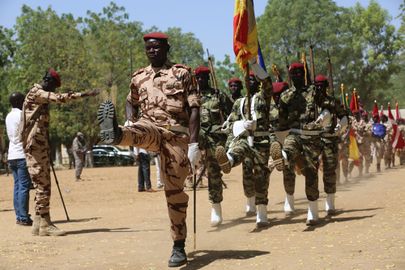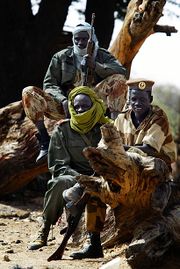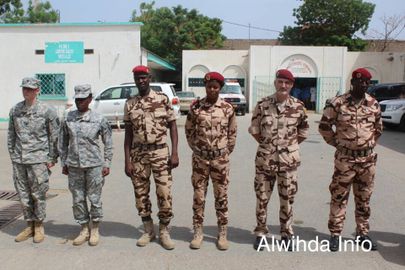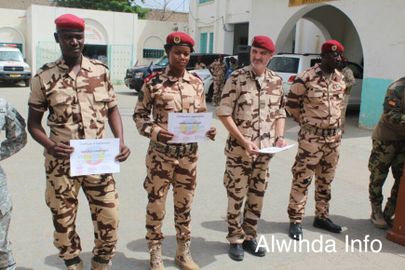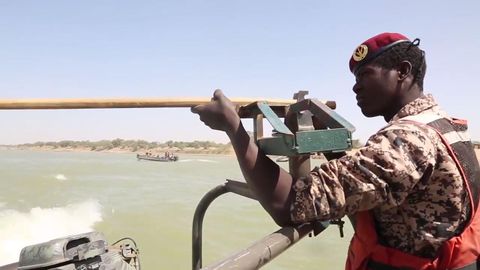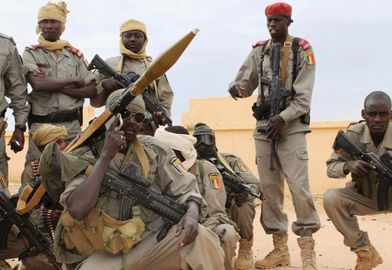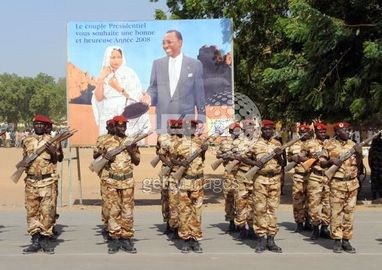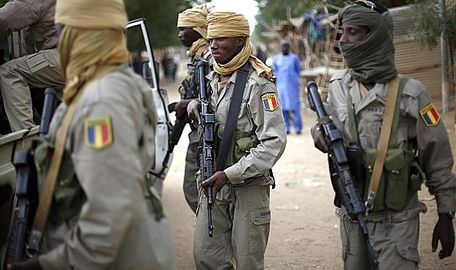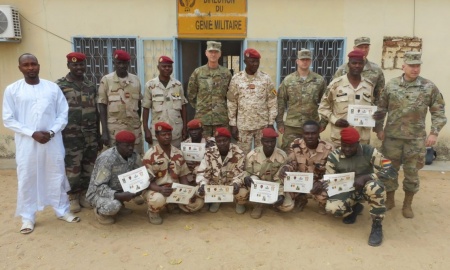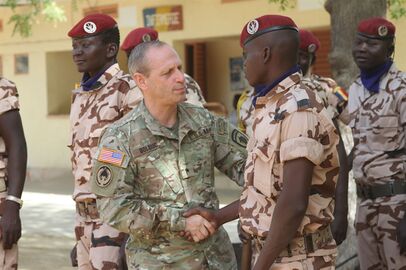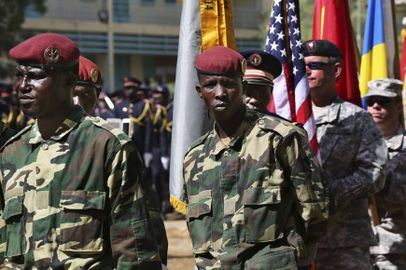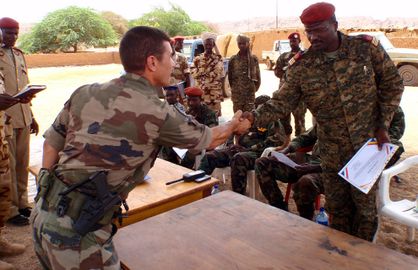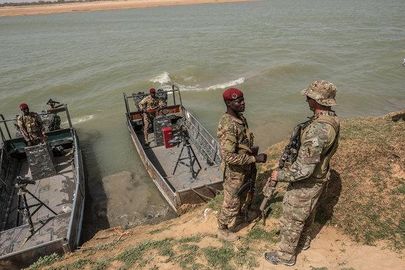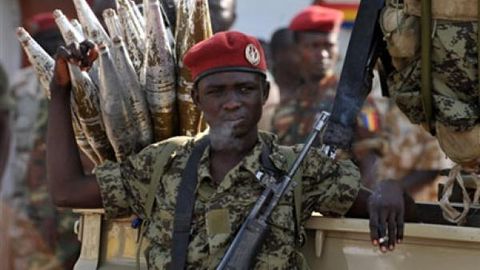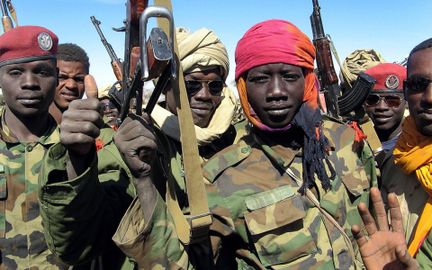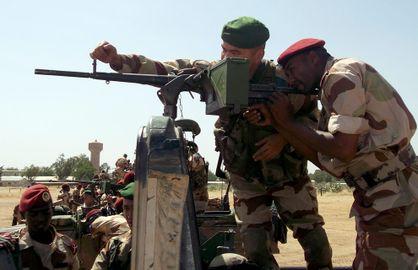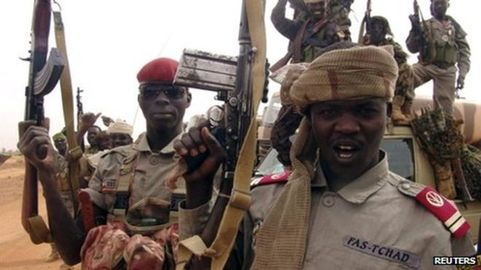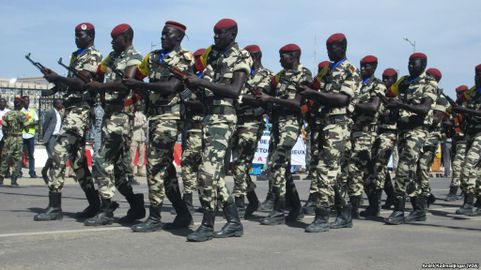Вооружённые силы Чада
Материал из ВикиВоины
Вооружённые силы Чада — совокупность войск республики Чад, предназначенная для защиты свободы, независимости и территориальной целостности государства.
История[править]
The former French colony of Chad attained independence in 1960. It is a very large mostly semi-desert country, but with a southern and western section of greater population and better vegetation. This geographical division is approximately matched by a major ethnic one: in the semi-desert areas Muslim peoples, mostly nomad, feel kinship with the north of Africa. In the south and west are negro peoples. Christian and animist. From independence to a military coup in 1975, Chad was ruled by President Francois (later Ngarta) Tombalbaye. At no time has the political life of Chad been easy — a reflection of its ethnic divisions . Tombalbaye's government was largely one of Sara and Majingaye peoples from the south and west. Plots against Tombalbaye were discovered in 1963 and in 1967, but it was the following year, 1968, that Chad's major problem, the revolt of the Muslim north under the FROLINAT movement, began. Chad, because it had been the first territory of France to respond to de Gaulle's call in 1940, was able to draw on considerable French support. The French garrison was deployed and later further troops were brought from France. Zaire sent a small air liaison unit. U.S. help also arrived and Israel trained a 200-strong Chad parachute unit. Fighting continued in the Borkou — Ennedi— Tibesti region; by the end of 1972 some 50 French soldiers and 500 Chad soldiers had been killed . A total force of some 1 800 French troops drawn from the 6th and later the 3rd Regiments de Marine were involved in 1968 and 1969. The French army commander. General Cortadellas, lost his own son among the Frenchmen killed. Cortadellas may well prove to be the last of the long line of French 'generaux d'Afrique'. French views on Chad were modified in the years after the death of de Gaulle and in the light of France's interests in Libya; also one group of the insurgents abandoned the struggle. The French began to scale down their involvement in 1970, withdrawing most troops from the fighting zones in 1971 and 1972. In 1975, following the Mme Claustre abduction in which the French government was obliged to deal directly with the insurgents, the new Chad President, General Malloum, in protest demanded that the French withdraw. Whether this withdrawal was meant literally or not is doubtful. Some French units departed, others remained in Chad uniforms. French assistance was in any case absolutely indispensable and new agreements for French military aid were signed early in 1976 since when some 600 French 'military advisers' have been reported to be in Chad. These are said not to be involved in the fighting, but there is no doubt that some at least have remained committed, although from Paris the continuing conflict is still officially seen as having become localised, with the Chad army build up to a sufficient strength to contain the insurgents, a view stated in the context of Franco— Libyan relations. In July, 1977 the arrival of a French unit prevented the loss of Ounianga Kebir to the insurgents, but it has since been lost. Fighting groups of Muslim insurgents now dominate almost all the centre and north of the territory, while Libyan forces appear to have entered, and to all intents and purposes annexed, the Aouzou area near the north-west border. At the time of writing, the Chad forces were attempting to hold a Hne very much further south, based on Abeche. Tombalbaye's government proved less and less able to meet the demands of the situation, one made worse by drought and administrative incompetence. Further plots to overthrow him were alleged to have been discovered in 1971 , 1972 and 1973. In 1975 the Chad army overthrew Tombalbaye who was killed in the coup; FROLINAT alleges French complicity in the coup but this is uncertain. A Council of Military Officers under the Presidency of General Malloum now rules Chad in face of the revolt of the north but seems as powerless as its predecessor despite the fact that FROLINAT appears now to have fallen apart into five or six rival groups. An attempt to assassinate Malloum in 1976 failed as did an abortive coup in 1977. Early in 1978 Libya's Colonel Gadaffi accepted, amid much publicity, a ceasefire on the basis of Chad promises for poUtical reform. However Gadaffi did not have links with some of the groups and in general his sincerity overall remains doubtful. Fighting is likely to continue. Recent developments have favoured the insurgents; in February, 1978 FayaLargeau, the chief city in the Borkou — Ennedi— Tibesti region, fell to FROLINAT, who also secured a large number of mihtary prisoners.
The role of the army of Chad is that of attempting to preserve the authority of N'Djamena (formerly Fort Lamy) over the rest of the territory; in simple terms, national survival. The army has been continuously committed to this role since 1967, as already noted.
No easy or quick solution seems possible for Chad, except in the negative sense that any withdrawal of French support would lead to an almost immediate total collapse. To an already poor area has come prolonged war and the Sahel drought. Economic exhaustion may prove decisive; it has already forced the Chad government to abandon any hope of regaining the potentially uranium wealthy Bardai and Aouzou areas in the north. It appears that only anxiety over the Muslims resident in N'Djamena has so far prevented FROLINAT from engaging in urban terrorism — this could prove a coup de grace for Chad. The whole future of the Chad State seems increasingly to be in doubt, and the Soviet-supported Libyan design of a belt of revolutionary Arab/Berber and Sahel radical States from Libya to the Atlantic a degree more probable.
Организация[править]
The Chad army, greatly expanded since 1960, consists at present of three infantry-battalion-size groups; a fourth is in the process of establishment. Some of the infantry are parachute-trained. There is also a reconnaissance unit. The normal deployment of the army is in three groups as follows: Group I at Mongo, comprising an infantry and a motorised infantry company, and two parachute companies; Group II at Abeche comprising one infantry and one parachute company, and two motorised infantry companies; Group III at Largeau comprising one infantry company and three speciaUst Saharan sub-units, these latter in normal times are stationed at Faya-Largeau and Ounianga Kebir. In addition, two reserve parachute companies are stationed at Sahr and Loumia. The gendarmerie comprises the Garde Nationale et Nomade of some 4000, and the Compagnies Tchadiennes de Securite of some 950.
Тренировка[править]
The army in the Tombalbaye period recruited in the south, in particular from among the Sara, Tombalbaye's own ethnic group. The post-coup government has been attempting to make the army more representative of the nation as a whole. A random system of obligatory military service for 3 years exists. The French have trained the Chad army since independence; mention has already been made of the limited Israeli and U.S. help. The French training mission of 'technical assistants' already noted remains, and the 1976 agreement gives France in return certain aircraft staging rights. These proved important for French support for President Mobutu in March, 1977.
Вооружение[править]
Chad is equipped with mostly French military equipment. This includes infantry weapons, Panhard AML H60 armoured cars and 120 mm and 81 mm mortars. The air force has a small number of U.S. Skyraider aircraft, together with French transports and helicopters. However, some evidence suggests that, surprisingly, the USSR has provided Chad with small quantities of mortars and APCs — the only reason that can be surmised is a wish to acquire some influence and prevent Libya from gaining a completely free hand. Recently rumours have also suggested the despatch of U.S. military equipment. Egypt is strongly sympathetic to the Chad government and has, it seems, influenced the American Carter administration.
Униформа[править]
В целом, униформа ВС Чада копировала французский образец, только вместо кепи использовались фуражки и береты.
Эмблема армии Чада в металлическом исполнении носится на беретах, а в вышитом варианте — на фуражках, погонах и петлицах. В центре эмблемы изображен традиционный кинжал с широким лезвием вниз, по бокам — два метательных топора (ножа), которые также служат в качестве ритуальных атрибутов у некоторых народов, населяющих Чад, Камерун, Нигерию, Бенин и частично Судан.
Галерея[править]
Источники[править]
- https://en.wikipedia.org/wiki/Military_of_Chad
- http://www.sammler.ru/index.php?showtopic=101828&page=5
- John Keegan. World Armies. — P.123-124.


